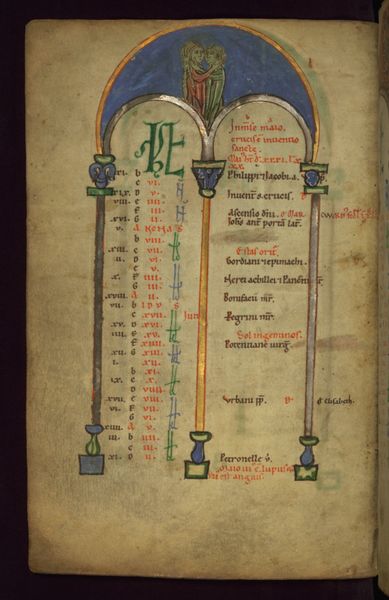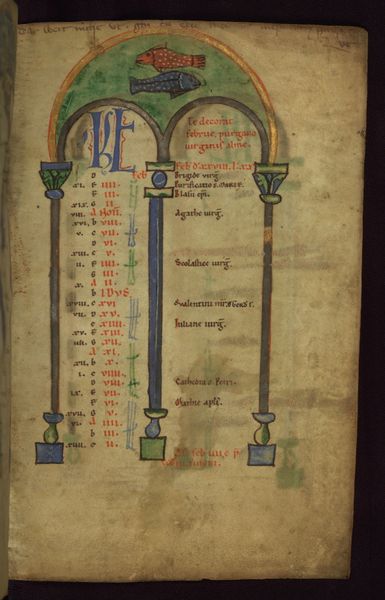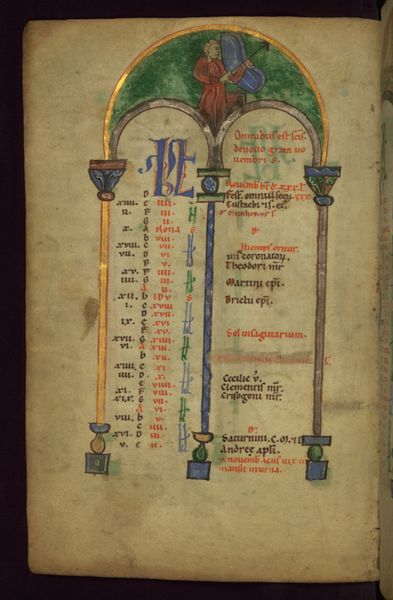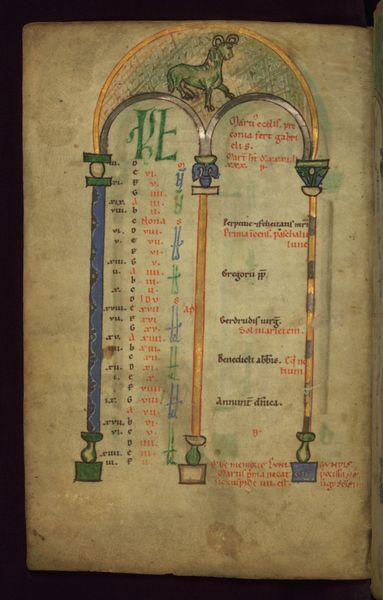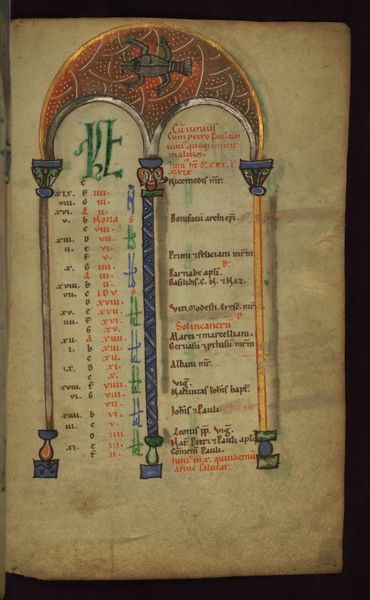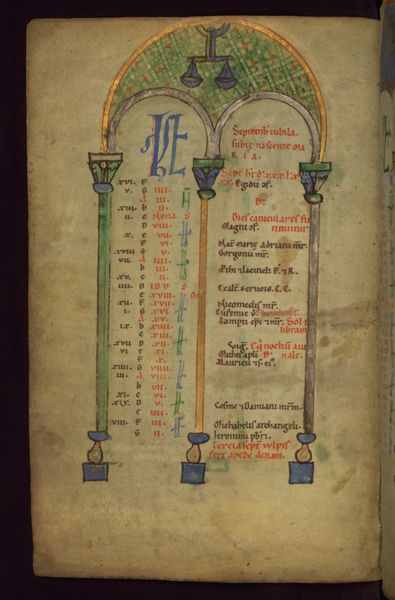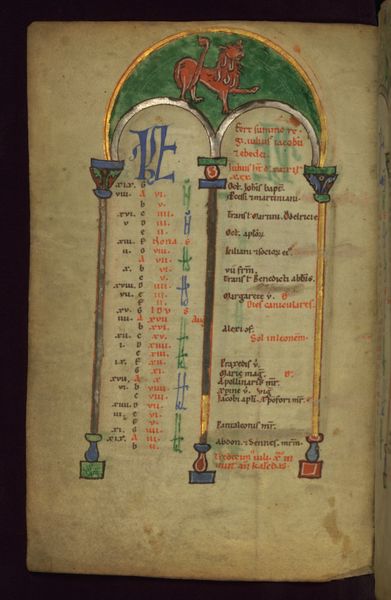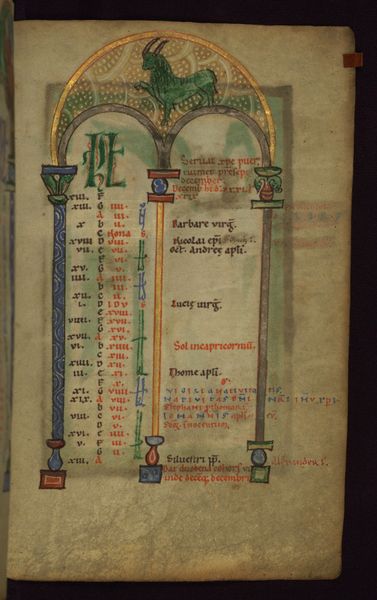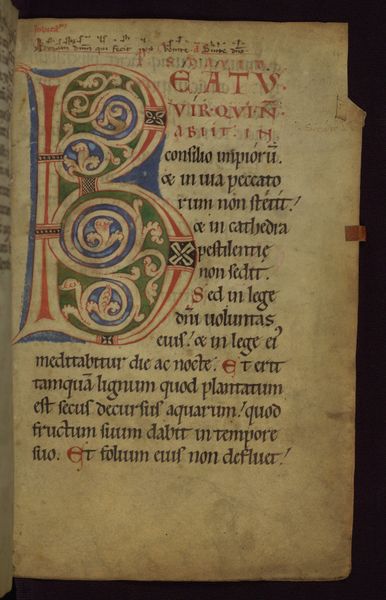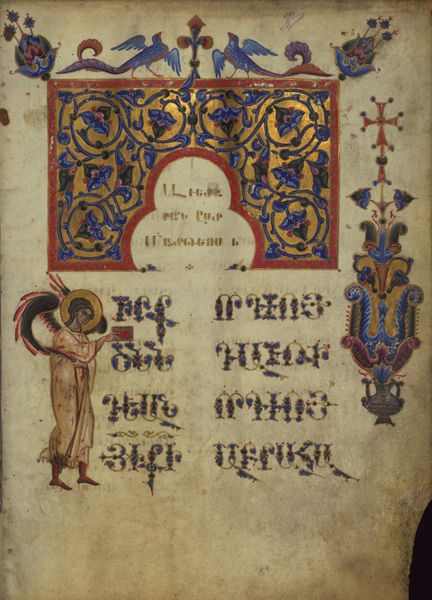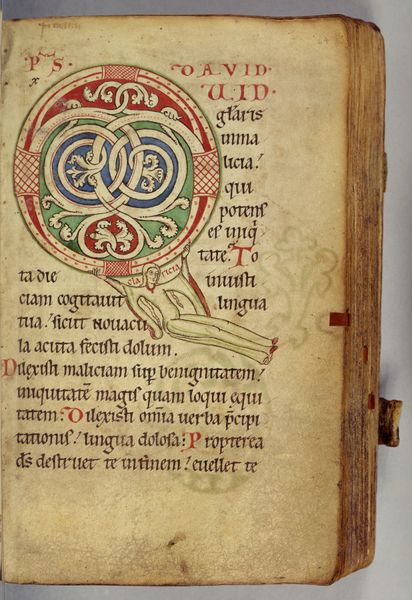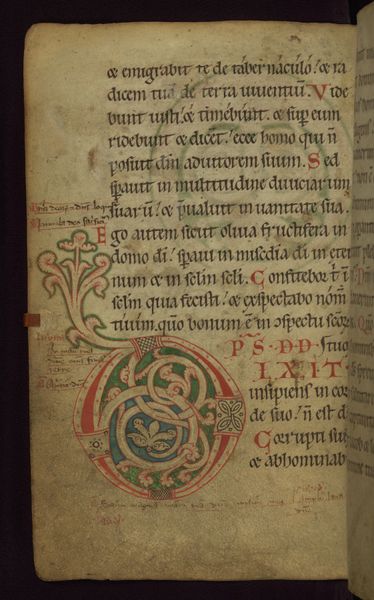
tempera, painting
#
medieval
#
tempera
#
painting
#
figuration
#
coloured pencil
#
miniature
Copyright: Public domain
Editor: This miniature, called "Aquarius," seems to be a page from a medieval calendar, perhaps painted with tempera. There’s something so charming and approachable about the figure at the top. How do you interpret this work within its historical context? Curator: Looking at it through a historical lens, the placement of this calendar within a book reveals so much about the power and the institutional frameworks that surrounded it. Who had access to such beautifully rendered objects? Was this created for a monastic community to structure their year, or for a wealthy patron as a symbol of status? The very existence of these illustrated calendars reveals a careful management of time and agricultural cycles by elites within medieval society. The 'Aquarius' image at the top symbolizes not just the zodiac, but also, the elite-directed agrarian cycles, tying into seasonal tasks. Do you see how the artistry also reinforces these systems of power? Editor: So the calendar isn't just about telling time, but reinforcing a social order. I hadn't thought about it that way. The red and black inks used for the lettering seem significant now, too. Curator: Absolutely. The controlled use of color, the disciplined layout—these all speak to a formalized practice, supported and maintained by specific social structures. We must consider where the resources for these books came from, and who was excluded from their creation and enjoyment. It is art embedded within, and reflecting, the broader political economy. Editor: It's fascinating to consider the layers of meaning embedded in something that, at first glance, seemed so simple. I’ll definitely look at medieval art differently now! Curator: Indeed! It is so much more than simple!
Comments
No comments
Be the first to comment and join the conversation on the ultimate creative platform.
